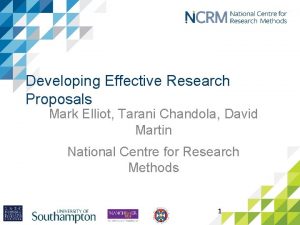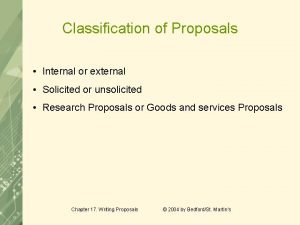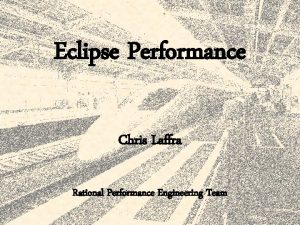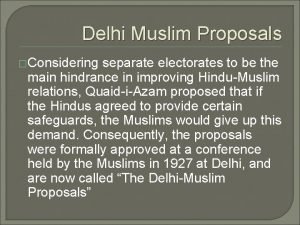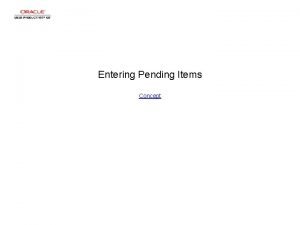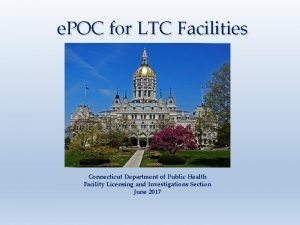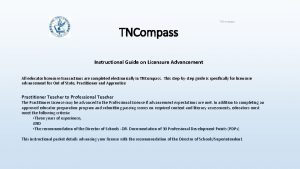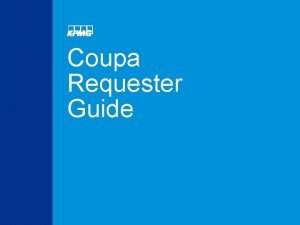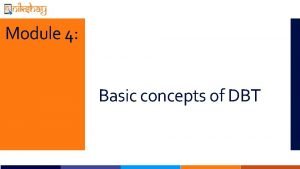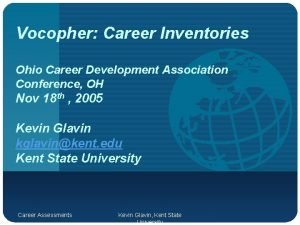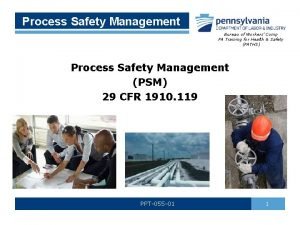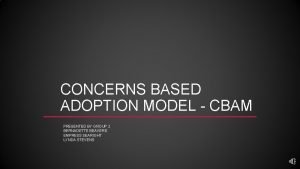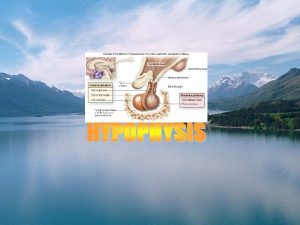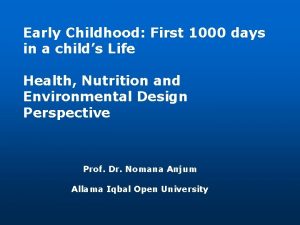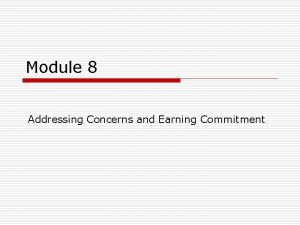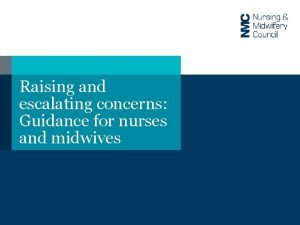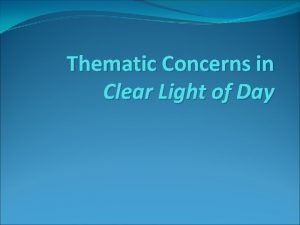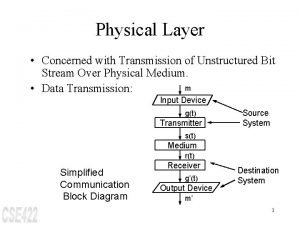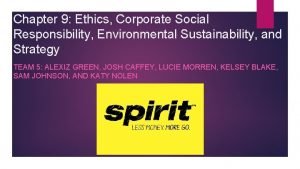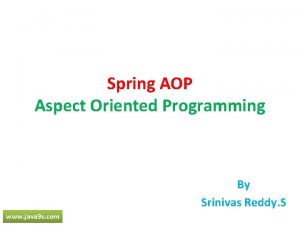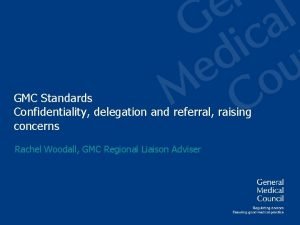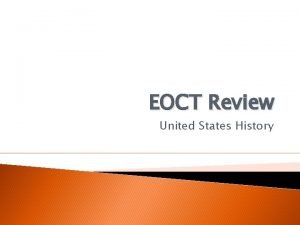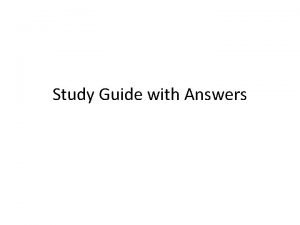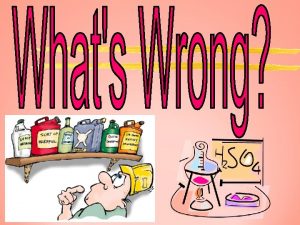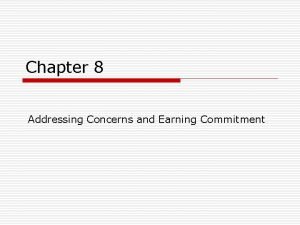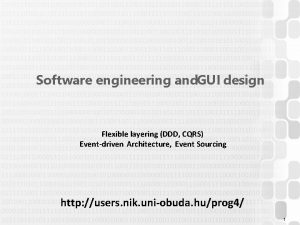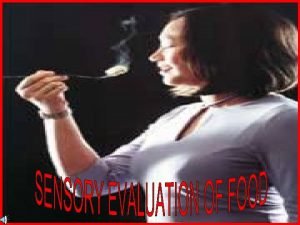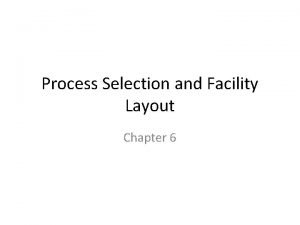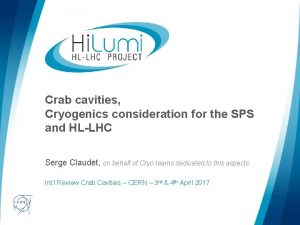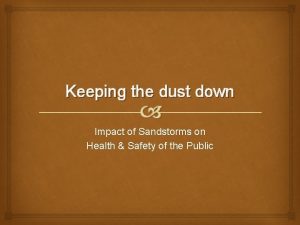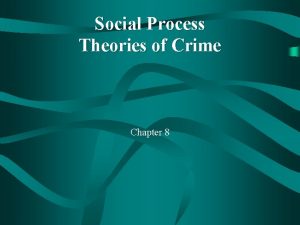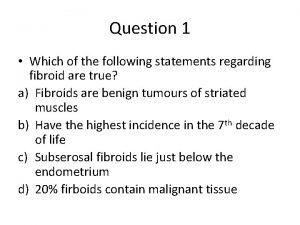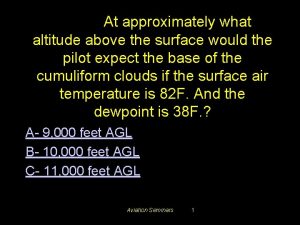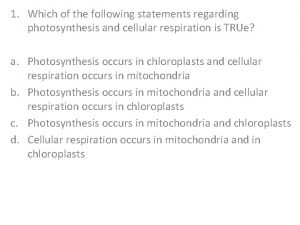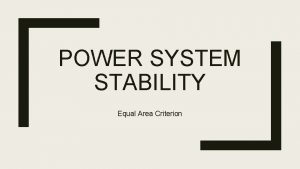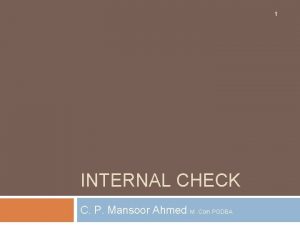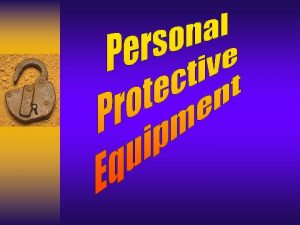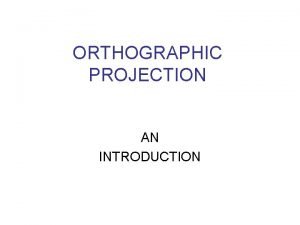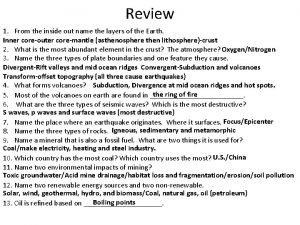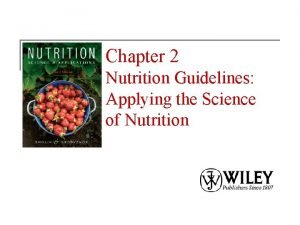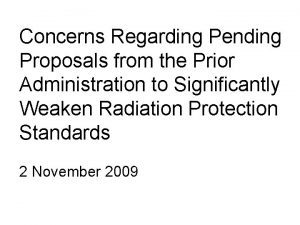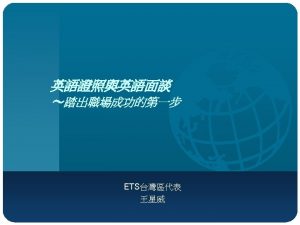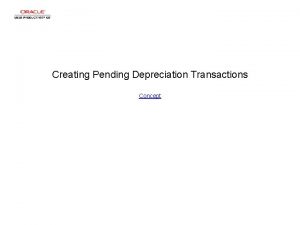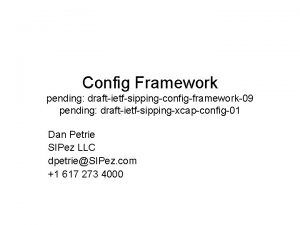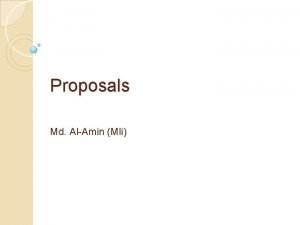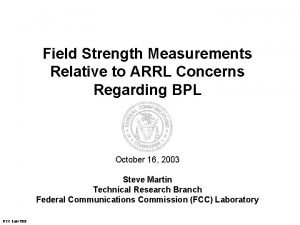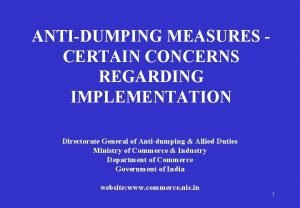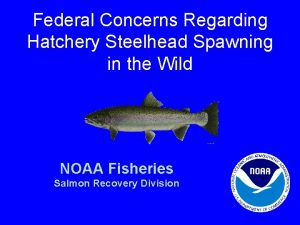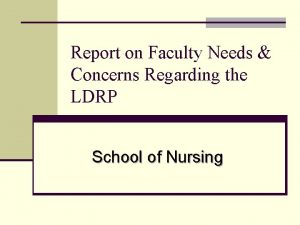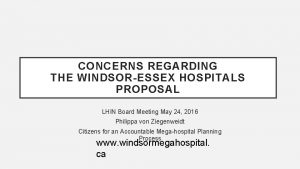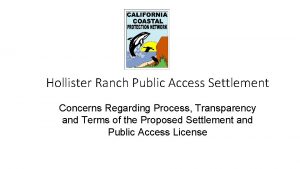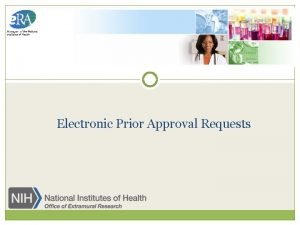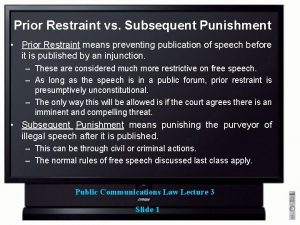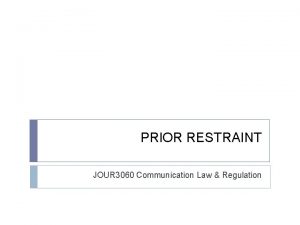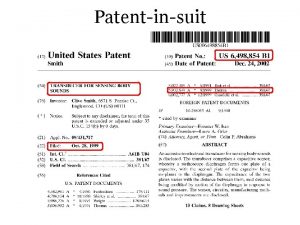Concerns Regarding Pending Proposals from the Prior Administration










































































- Slides: 74

Concerns Regarding Pending Proposals from the Prior Administration to Significantly Weaken Radiation Protection Standards 2 November 2009

Starting Point: Longstanding Fundamental EPA Principles 1. Cancer Risks Should Not Exceed Acceptable Risk Range of 10 -6 to 10 -4 2. Drinking Water Should Not Exceed Safe Drinking Water Levels (MCLs)

THE OVERARCHING CONCERN During the prior administration, ORIA proposed markedly weakening radiation standardsto levels far outside the risk range and far above the MCLs, placing longstanding EPA fundamental policies at risk

Preliminary Background

Key Cancer Incidence Risk Conversion Factor for Radiation Current EPA Factor: 8. 46 x 10 -4/Rem EPA, Federal Guidance Report 13, Cancer Risk Coefficients for Environmental Exposure to Radionuclides (1991) Newest National Academy of Sciences Factor: 1. 14 x 10 -3/Rem NAS, Health Effects from Exposure to Low Levels of Ionizing Radiation [Biological Effects of Ionizing Radiation (BEIR VII)], 2006

In round numbers, EPA’s own official figure is -3 ~1 x 10 cancer risk/Rem

All agencies, including EPA, accept the Linear No-Threshold (LNT) Model, and the NAS has recently reaffirmed it. LNT means there is no threshold of radiation exposure below which the risk is zero; risk increases with dose.

Thus, for example, 0. 01 Rem/yr (10 m. Rem/yr) for 30 yrs = 0. 3 rem Using EPA’s radiation risk factor of 1 x 10 -3 cancer/rem, 0. 3 rem =3 x 10 -4 risk Thus 10 m. Rem/yr for 30 years is at or beyond the outer limit of the risk range

0. 1 Rem/yr (100 m. Rem/yr) for 30 yrs would, according to EPA’s own risk figures, result in a 3 x 10 -3 risk, or 30 times higher than the upper end of the acceptable risk range.

1 Rem/yr for 30 yrs = -2 3 x 10 risk 10 Rem/yr for 30 yrs = 3 x 10 -1 risk 300 and 3000 times the upper end of the risk range

EPA has historically opposed any radiation standard above 15 m. Rem EDE/year and above. For example, NESHAPs were set at 10 m. Rem/yr, MCLs at 4 m. Rem/yr, etc. Anything higher would exceed the EPA risk range, and EPA has declared would be “non-protective”.

ISSUE 1 THE DHS/EPA “DIRTY BOMB” PROTECTIVE ACTION GUIDE (PAG) A Taskforce, which included EPA, issued in August 2008 final guidance for recovery from a Radiological Dispersal Device (RDD) (Planning Guidance for Protection and Recovery Following Radiological Dispersal Device)

The PAG included provisions for the long-term cleanup phase (which is to begin a year or two after the event). EPA’s position initially was that its CERCLA standards for cleaning up the nation’s most contaminated sites should apply. Other agencies resisted; EPA acquiesced.

The final Dirty Bomb PAG established for long-term cleanup a process called “optimization, ” by which there would be no healthbased cleanup standard but rather one could choose any cleanup level one wished from various “benchmarks. ”

Those benchmarks included • 0. 1 Rem/year • 10 Rem/year Below the benchmark, no cleanup would occur.

Over the standard 30 year occupancy period EPA normally assumes, doses to the public under those benchmarks would result in cancer risks, according to EPA’s official risk coefficients, of approximately: • ~3 x 10 -3 • ~3 x 10 -2 and • ~3 x 10 -1 respectively 1 to 3 orders of magnitude outside EPA’s acceptable risk range, and as high as 1 in 3 risk


EPA had initially resisted “optimization, ” insisting on long-term cleanup standards within the risk range, but acquiesced. We were assured this would be limited to the dirty bomb PAGs, but were concerned it would end up applied to all sorts of other releases, and indeed, that is what ORIA tried to publish in the last days of the outgoing administration.

Issue 2 Revised EPA PAGs

In the last full day before the Obama Inauguration, outgoing Acting Administrator Marcus Peabody transmitted to the Federal Register ORIA’s rewrite of EPA’s PAGs for dealing with a wide range of radiological releases.

We had written the outgoing Administration urging that it not engage in such “midnight mischief. ” The Obama Administration, a day or two after taking office, and before the PAG could be published in the Federal Register, pulled it back, pending review by its new team.

That is part of why we are here, to urge that review result in the PAGs not being issued as ORIA had drafted them in the prior Administration. As drafted, they would astronomically increase permissible exposures to radioactivity.

The revised Protective Action Guidance would be applicable to any “event or a series of events, deliberate or accidental, leading to the release or potential release into the environment of radioactive materials in sufficient quantity to warrant consideration of protective actions. ” PAG August 2007 draft, p. 1 -1

PAGs are to apply to a “wide range of incidents, ” including transportation events, releases from a radiopharmaceutical facility, contamination at a scrap metal or recycling facility, incidents at research reactors, and incidents and releases at Department of Energy facilities or civil power reactors. PAG draft p. ES-2, PAG website http: //www. epa. gov/radiation/rert/pags. html

“A PAG is defined as ‘the projected dose to reference man, or other defined individual, from a release of radioactive material at which a specific protective action to reduce or avoid that dose is recommended. ’ PAG Draft p. ES-2

In 2001, EPA’s position was that any revised general PAGs should be based on Safe Drinking Water MCLs for intermediate phase water consumption and the CERCLA risk range for long-term cleanup standards. Subsequently, those positions were abandoned and proposals to extraordinarily relax these standards were put forward.

Intermediate Phase Water PAGs The intermediate phase lasts for one to several years after the initial release. Buried deep in the proposed PAGs is the following table—with no explanation that the water contamination limits in the table are different than longstanding EPA water standards, nor any substantive explanation of how they were derived. (The right-hand two columns, marked DRL, or Derived Response Levels, are the proposed water contaminant limits in the draft PAGs. )





EPA Maximum Concentration Limits (MCLs) for Beta and Photon Emitters in Drinking Water Source: EPA Directive 9283. 1 -14, Use of Uranium Drinking Water Standards under 40 CFR 141 and 40 CFR 192 as Remediation Goals for Groundwater at CERLCA Sites, 6 November 2001


A Comparison of the Proposed Water PAGs and Longstanding MCLs









Superfund uses the MCLs as its RALs—Removal Action Levels—emergency response levels.

Forcing the public to drink water contaminated at orders of magnitude above Safe Drinking Water Levels, for a year or more after an event, is contrary to longstanding EPA practice, which is to provide alternative drinking water supplies or require cleanup of contaminated supplies.

Optimization in the EPA PAG In addition to dramatically weakening drinking water protections, the new PAGs would adopt “optimization” for all long-term cleanup under the PAGs—permitting risks orders of magnitude outside the risk range.


Issue 3: 100 millirem guidance ORIA has been pushing to issue new guidance that would generically declare that EPA finds doses of 100 m. Rem/yr. acceptable —even though EPA has historically declared 100 m. Rem/yr “nonprotective” and it is far outside the risk range.

100 m. Rem/yr over 30 years is ~3. 4 x 10 -3 risk, 34 times the upper end of the risk range. Over 70 years of exposure, it is 8 x 10 -3 risk, 80 times the upper end of the risk range. EPA has always opposed dose limits and associated risks this high.

For example, then-Administrator Browner wrote to then-NRC Chair Shirley Ann Jackson on 7 February 1997 opposing a proposed license termination/cleanup rule at 30 m. Rem/year, calling it not “adequately protective of human health and the environment. ”

On April 21, 1997, EPA issued a statement on the NRC’s Rule on Radiological Criteria for License Termination, stating “unequivocally” that EPA cannot find 75, 80, or 100 m. Rem/yr “sufficiently protective. ” It would “not adequately protect. . . the health of our citizens. ”

EPA stated “that a 100 mrem dose would result in a risk that is seven times higher than would be permitted for other environmental pollutants under the Nation’s laws governing the cleanup of contaminated sites. ”

And EPA concluded, “To put it bluntly, radiation should not be treated as a privileged pollutant. ”

Were EPA to reverse decades of consistent policy and now permit radiation risks to the public exceeding those of any other carcinogen, well outside EPA’s historic risk range, it would undermine EPA’s entire regulatory structure. Every polluter, every owner of contaminated property, would insist on EPA relaxing its rules for non-radioactive contaminants as well.

Issue 4: EPA Rejection of NAS Radiation Recommendations

EPA requested, and helped fund, the latest NAS study on health risks from ionizing radiation (BEIR VII). BEIR VII concluded that cancer incidence per unit dose was about 35% higher than previously assumed, including by EPA relied on 1991 guidance, based on an older NAS BEIR study, for its estimate of 8. 46 cancers per 10, 000 person-rem. NAS now recommends using 11. 41.

ORIA is preparing a revised “Blue Book” supposedly to incorporate the new NAS findings. However, in the great majority of cases, ORIA proposes in fact lowering the risk estimates identified by the National Academy. What follows is a chart from the draft Blue Book showing ORIA’s own comparison of its proposed values and those found by NAS.


EPA during the previous administration was frequently accused of politicizing science. It is hard to understand how EPA can ask the National Academy of Sciences to prepare the seminal update on radiation risk, then reject its findings, with the rejections in the great majority of cases on the side of weakening protections.

Also, NAS found evidence that X-rays (and low-energy betas like those from tritium) were on the order of 2 -3 times more harmful per unit dose than its estimates for regular gamma, writing:

"It may be desirable to increase risk estimates in this report by a factor of 2 or 3 for the purpose of estimating risks from lowdose X-ray exposure. "

Yet, the Radiation Advisory Committee (RAC) reviewing the draft Blue Book recommended that EPA continue to use the outdated, too-low risk figures it had been using for X-rays and low-energy betas and delay for an extended period any correction.

The Science Advisory Board, in its review of RAC’s review, was troubled by this. One SAB reviewer wrote: “Should [EPA continue to] use an RBE [Relative Biological Effectiveness] of 1 knowing that the real RBE is in excess of 1? ”

This is an issue of great importance to public health, given the explosion in public exposures from CT scans. If the true risk is 2 -3 times greater than present estimates, a very large number of cancers might be created by such exposures and the failure of EPA to notify the public and practitioners of the increased risk.

Example: a GI series CT scan—often routinely prescribed for matters as potentially routine as microscopic traces of blood in the urine—can result in a dose of ~5 Rem. Based on the NAS findings, on average, 1 in 90 to 1 in 60 people who get such a test may get a cancer from it. Surely, doctors and the public should be allowed to know this, so appropriate risk benefit decisions can be made. EPA’s refusal to fix its official estimates in a timely fashion and to continue to use numbers that it knows may be 2 -3 times too low can cause a great deal of public harm.

Issue 5 Proposal to Allow Radioactive Waste to Be Disposed of in Sites Neither Licensed Nor Designed for Radioactive Waste

“Low-level” radioactive waste (LLRW) is defined as all radioactive waste that is not irradiated reactor fuel or reprocessing residues, tailings, or certain other materials. LLRW long has been required to be disposed of in facilities licensed for such wastes and meeting special design and operational requirements for radioactive waste.

Industry has desired to be permitted to dispose of radioactive wastes in facilities neither licensed nor designed for such wastes, because they would be cheaper. During the previous administration, efforts were in the works to let such wastes go to non-radioactive waste facilities, such as RCRA Part C facilities and regular municipal landfills.

This would be very troublesome. The sites are not designed to safely handle such wastes. They do not have the health physics personnel or training, the design features, the capability for monitoring groundwater and air emissions for radioactivity, nor the other special capacities required for radioactive waste disposal.

Additionally, mixing chemical and radioactive wastes increases the risk in a multiplicative rather than just additive fashion. The presence of chelating compounds or organic complexing agents, for example, cause dramatic changes in the soil retention factor Kd, markedly increasing radionuclide migration rates. Placing radioactive wastes in a facility that also has chemical wastes can greatly increase the environmental impacts.

In California, huge uproar has twice occurred when radioactive waste generators tried to slip such wastes into unlicensed sites, generally in lowincome, minority areas. EJ controversies arose first at Buttonwillow and now Kettleman Hills, where already severely-impacted communities were to face the potential for radioactive waste as well coming in, to facilities not designed to safely handle it.

Conclusion The Asks: 1. Don’t permit the EPA PAGs to be released with long-term cleanup standards outside EPA’s risk range or drinking water PAGs greater than Safe Drinking Water levels.

2. Push for the DHS-EPA dirty bomb PAGs to be revised, eliminating “optimization” and requiring cleanup consistent with the EPA risk range. 3. Block issuance of 100 m. Rem guidance, or any rad standard greater than the risk range. 4. Assure that the Blue Book does not relax radiation risk estimates below those recommended by NAS; immediately upgrade risks for X-rays and low-energy betas by 2 -3.

5. Do not allow radioactive waste to be disposed of anywhere other than a licensed radioactive waste site; don’t let it go to RCRA C or municipal landfills. 6. Address the institutional problems within ORIA that led to these proposals to weaken protections in the first place.

7. Keep communications lines open with our NGO community, as the problems we have identified here are not all-inclusive, but rather examples of larger problems. Thank you.
 Artificial intelligence thesis proposals
Artificial intelligence thesis proposals Developing effective research proposals
Developing effective research proposals Reports and proposals
Reports and proposals Solicited external
Solicited external Eclipse computing proposals slow
Eclipse computing proposals slow Writing and completing reports and proposals
Writing and completing reports and proposals Nature and use of fire insurance
Nature and use of fire insurance Delhi muslim proposals
Delhi muslim proposals Difference between formal and informal proposals
Difference between formal and informal proposals When evaluating cost-cutting proposals
When evaluating cost-cutting proposals Title of the study
Title of the study Pending item
Pending item Ltc print pending
Ltc print pending Tncompass experience verification form
Tncompass experience verification form Pending buyer action
Pending buyer action Njfams
Njfams Finance department
Finance department Zoho background checks
Zoho background checks Dbt
Dbt The network layer is concerned with of data.
The network layer is concerned with of data. What does lennox say about malcolm donalbain and fleance
What does lennox say about malcolm donalbain and fleance Vocopher
Vocopher Design concerns
Design concerns Piping and instrumentation diagrams
Piping and instrumentation diagrams Concerns-based adoption model
Concerns-based adoption model Health concerns
Health concerns Health concerns
Health concerns Joys and concerns prayer
Joys and concerns prayer Chapter 6 process selection and facility layout
Chapter 6 process selection and facility layout Addressing concerns and earning commitment
Addressing concerns and earning commitment Where has macduff gone and why
Where has macduff gone and why Escalating concerns
Escalating concerns Thematic concerns
Thematic concerns The physical layer concerns with
The physical layer concerns with Spirit airlines corporate social responsibility
Spirit airlines corporate social responsibility Java9s
Java9s Gmc raising concerns flowchart
Gmc raising concerns flowchart When a choice concerns matters of personal value or taste
When a choice concerns matters of personal value or taste Maria zita molla
Maria zita molla What are the concerns of the constitutions?
What are the concerns of the constitutions? Macmillan concerns checklist
Macmillan concerns checklist It concerns many sociologists
It concerns many sociologists What are banquo's concerns about the witches prophecy
What are banquo's concerns about the witches prophecy Identify concerns
Identify concerns A traditional method of earning commitment is the
A traditional method of earning commitment is the Flexible software design
Flexible software design Software design separation of concerns
Software design separation of concerns Comfort food psychology
Comfort food psychology Joys and concerns images
Joys and concerns images Layouts that can handle varied processing requirements
Layouts that can handle varied processing requirements Lumi sps
Lumi sps Health concerns
Health concerns Features of taiga
Features of taiga Joys and concerns
Joys and concerns Matzas
Matzas Which of the following statements regarding
Which of the following statements regarding Characteristics of unstable air aviation
Characteristics of unstable air aviation Which of the following statements regarding the
Which of the following statements regarding the What is hearsay evidence
What is hearsay evidence Equal area criterion examples
Equal area criterion examples Internal check regards wages
Internal check regards wages Iee regulations regarding 13a socket outlets
Iee regulations regarding 13a socket outlets 29cfr1910.132
29cfr1910.132 Orthographic projection box
Orthographic projection box Answer the questions below regarding the heating of a house
Answer the questions below regarding the heating of a house An email seeking admission information
An email seeking admission information Which is the false statement regarding rdas?
Which is the false statement regarding rdas? Difference between absolute and contingent contract
Difference between absolute and contingent contract What is cole's idea to cure peter's depression
What is cole's idea to cure peter's depression What policy did the qing adopt regarding foreign trade?
What policy did the qing adopt regarding foreign trade? Diễn thế sinh thái là
Diễn thế sinh thái là Thế nào là giọng cùng tên
Thế nào là giọng cùng tên 101012 bằng
101012 bằng Tỉ lệ cơ thể trẻ em
Tỉ lệ cơ thể trẻ em Hát lên người ơi
Hát lên người ơi

